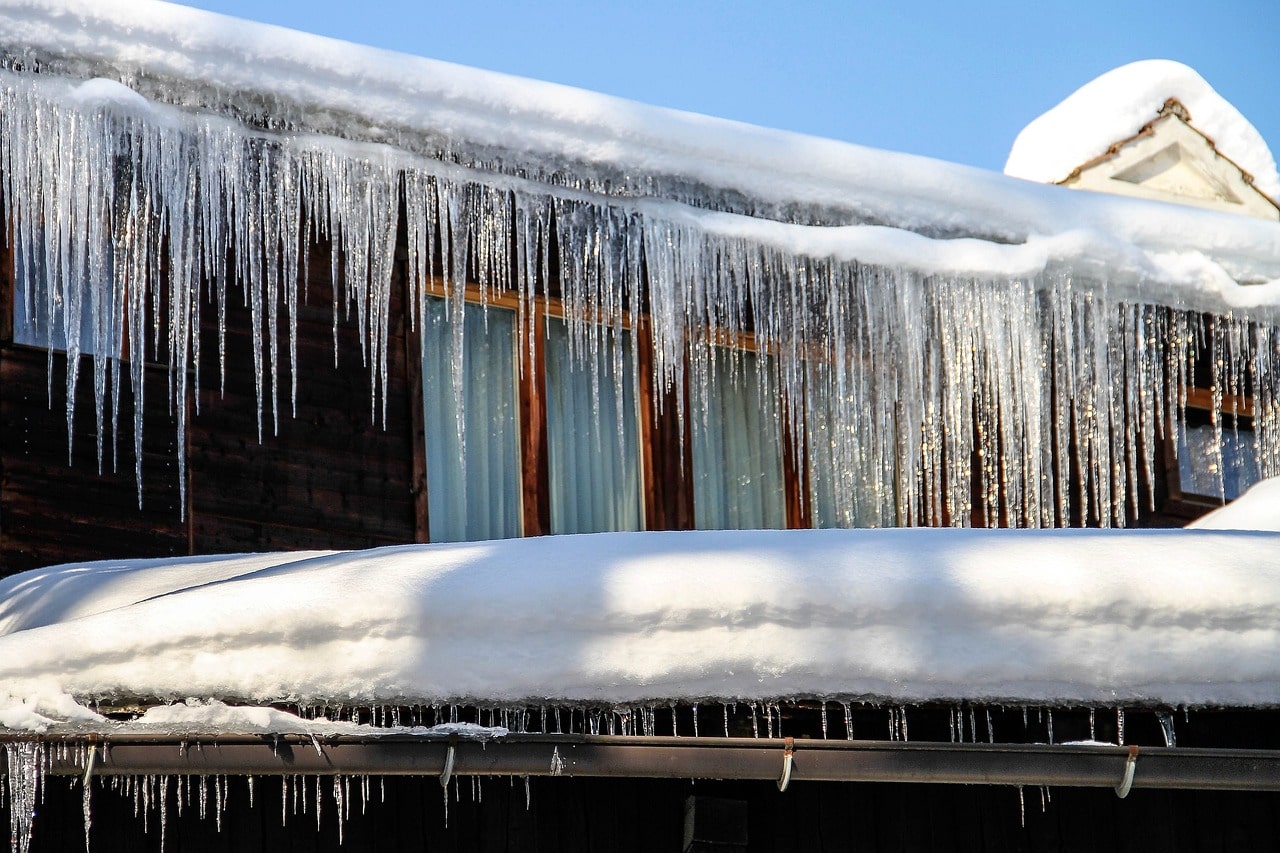Ice dams can be a frustrating and potentially damaging problem for homeowners during the winter months. Ice accumulation along the edges of roofs can lead to water seepage, causing leaks and structural damage.
While dealing with ice dams may seem daunting, fear not, for there are effective methods to remove them. In this discussion, as diligent roofers, we will explain the steps to safely eliminate ice dams, assess the damage they may have caused, and provide valuable tips on preventing future occurrences.
So, if you’re tired of battling ice dams and want to protect your roof from their icy grip, read on to discover the solutions at your disposal.
Understanding Ice Dams
Understanding ice dams is essential for homeowners in cold climates to effectively prevent damage to their roofs and maintain the integrity of their homes.
Ice dams are formed when snow on the roof melts, flows down towards the eaves, and refreezes due to the colder temperatures in that area.
This cycle repeats, causing a build-up of ice and snow along the roofline, leading to significant problems if not addressed promptly.
The primary cause of ice dams is inadequate insulation and ventilation in the attic. As warm air from the living space escapes into the attic, it heats the underside of the roof, leading to the melting of snow.
The consequences of ice dams can be severe, including water leaks, roof damage, and even structural issues.
As the ice and water penetrate beneath the shingles, it can result in the roof deck’s rotting and mold and mildew growth.
Additionally, the weight of the ice can put excessive stress on the roof, causing it to sag or even collapse in extreme cases. Therefore, understanding the causes and consequences of ice dams is crucial for homeowners to take appropriate preventive measures.
Assessing the Damage
To adequately address the impact of ice dams on your roof, it is crucial to thoroughly assess the damage.
Evaluating the roof after ice dams have formed involves systematically examining various components and potential risks. Begin with a visual inspection of the roof to identify any indications of water leakage or structural damage.
Check for cracked or missing shingles, areas that appear to be sagging, or water stains on the ceiling. It is essential to check the attic as well, as this can help identify insulation issues or hidden water damage. Exercise caution when accessing the roof, particularly if it is covered in ice or snow.
If you are unsure about the extent of the damage or how to safely assess the roof, consulting with a professional roofing contractor is recommended.
Safely Removing the Ice Dams
After thoroughly assessing the damage caused by ice dams on your roof, it is crucial to understand the safe and effective methods for removing them.
When it comes to removing ice dams, preventing injuries should be a top priority. To ensure safety, it is essential to use the proper tools. A frequently employed tool for this task is a roof rake, enabling the removal of snow from the roof while standing on the ground.
However, if the ice dam has already formed, it may be necessary to use a roof steamer or a heat cable system.
These tools can help melt the ice and create channels for water to flow off the roof, preventing further damage. Always exercise caution when using any tools on your roof; if you are unsure or uncomfortable, it is recommended to hire a professional.
Preventing Future Ice Dams
One effective method for preventing future ice dams is through proper insulation and ventilation of your roof.
Insulating solutions can help maintain a consistent temperature on your roof, preventing the formation of ice dams. Adequate insulation can be achieved by adding more insulation to your attic or roof space.
This practice will assist in retaining heat within your home, preventing its escape to the attic.
This, in turn, can avert the melting of snow on the roof, thereby reducing the risk of ice dams. Additionally, proper ventilation is crucial in preventing ice dams. It allows cold air to circulate in the attic, keeping the roof temperature cool and preventing snow from melting and refreezing.
Regular roof maintenance, such as removing leaves, debris, and snow, can also help prevent ice dams by ensuring proper water drainage and reducing the chances of water pooling and freezing on your roof.
Hiring Professional Help
Professional assistance is essential in effectively addressing and preventing ice dams on your roof.
Enlisting the services of professionals ensures that the task is completed accurately, saving you time and effort. The expense of hiring professionals may fluctuate based on the size of your roof and the severity of the ice dam issue.
Nonetheless, it is crucial to bear in mind that the cost of hiring professionals is often justified by the potential damage that untreated ice dams can cause.
When seeking reputable roofing contractors, it is advisable to ask for recommendations from friends, family, or neighbors who have dealt with ice dams in the past.
Another option is to conduct an online search for local roofing contractors with expertise in ice dam removal and prevention.
Always verify their credentials, read customer reviews, and request quotes before deciding.
